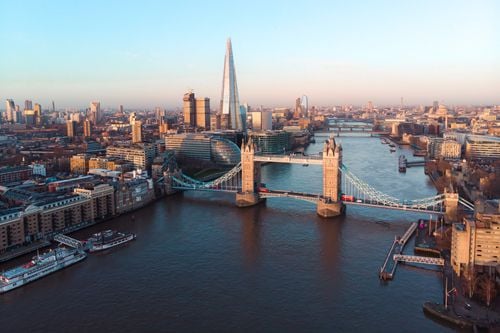The Istanbul Archaeological Museum is an excellent way to discover the country's heritage. This museum covers the history of Turkey, from Antiquity to the Byzantine period through to the Ottoman and Islamic periods. Divided into three sections, the museum displays artefacts discovered during archaeological excavations and brought to Istanbul during the Ottoman Empire.
Istanbul's Archaeological Museum is one of the city's most important historical monuments. Within its walls, a million unique pieces from various civilisations are on display. All the civilisations that flourished on the territory of modern Turkey and the former Ottoman Empire have an important place in this museum. The museum, which dates back to the end of the 19th century, is headed by : **Turkish archaeologist and painter Osman Hamdi Bay ** For a long time, this activist fought for the protection of historic monuments and called for the adoption of a law banning the export of cultural goods from Turkey.
The museum houses artefacts from several civilisations and periods: Anatolia, the Balkans, Mesopotamia, Africa and the Arabian Peninsula. The museum is one of the first ten buildings in the world to be constructed as a museum. It is divided into three sections: the Archaeology Museum, the Museum of Ancient Oriental Artefacts and the Tiled Pavilion Museum (the oldest, built in 1472).
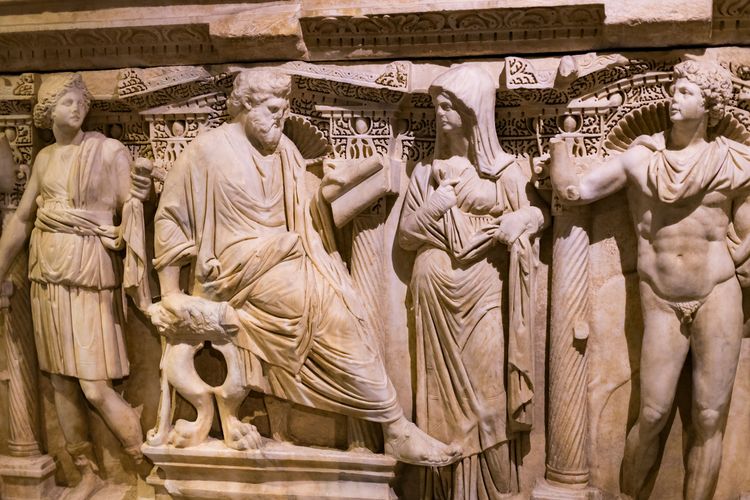
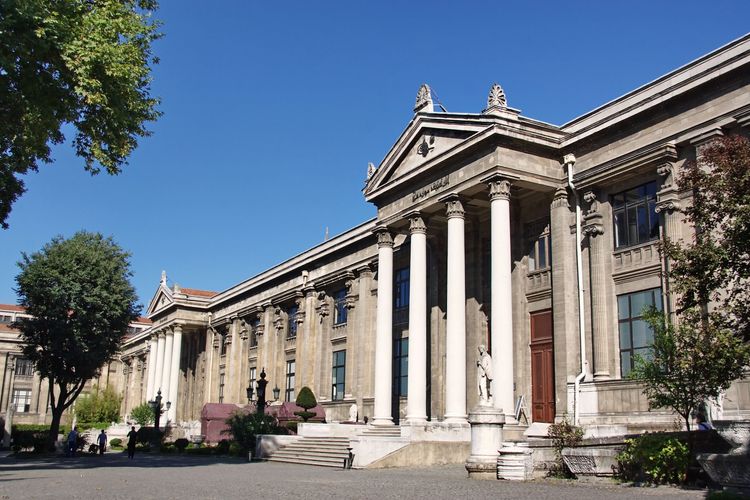
The history of the Istanbul Archaeological Museum
Istanbul's archaeological museums, divided into three museums, have existed since 1869. It was originally called the Imperial Museum.
Initially, only tombs from the 4th to 5th centuries were exhibited in Istanbul's first gallery. In fact, it was called the Museum of Sarcophagi. Over the years, however, the collection grew, necessitating the construction of additional premises, and in 1935 the second museum dedicated to the Ancient Orient was opened.
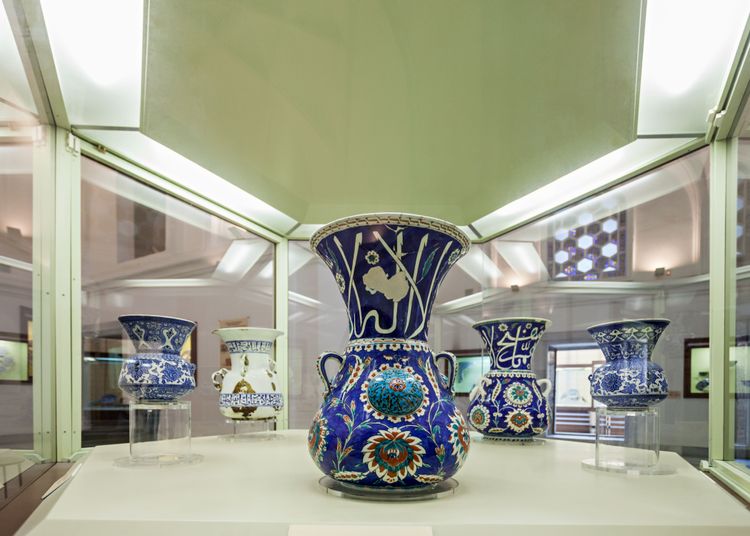
An overview of the museum's three buildings:
The archaeological museum
Its building is a neoclassical structure and is one of the first buildings in the world designed and built to be a museum.
The Imperial Museum (the first structure founded in 1886) was insufficient to accommodate the new works. The works were moved to the new building in 1888 (the Museum of Archaeology), designed by the famous architect Alexandre Vallery.
 Istanbul
Istanbul
Almina Guest House
Magnificent hotel located 800 metres from the Blue MosqueToday, this building houses works from the excavations carried out by Osman Hamdi Bey in Sidon (now Lebanon). These include the Tomb of Iskender, the Tomb of the Weeping Women, the Tomb of Lycia and the Tomb of Tabnit.
In the first room, you can see the handicrafts of the Turkish people and the different cultures in Turkey. There is a collection of prehistoric antiquities, Greek, Roman and ancient Byzantine artefacts, as well as a large collection of coins.
"Magnificent museum! One of the best places in Istanbul! Lots to discover from Egypt, Greece and Italy! Superbly well maintained! It took us 2 hours to visit it! It was a great time!"
The Museum of Ancient Oriental Art
Opposite the Archaeology Museum is the Museum of Ancient Oriental Art. Here, historical and artistic works from ancient Babylon are on display. There are also pre-Islamic artefacts from ancient Egypt to Mesopotamia, from Hittite and Assyrian cuneiform tablets to Pharaonic statues.
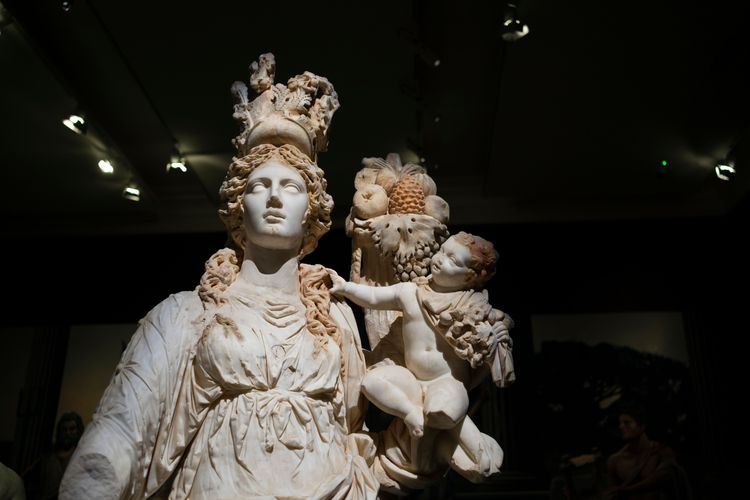
The tiled pavilion
The third museum, also known as the Museum of Islamic Art, is the oldest Ottoman structure in Istanbul. It was built in 1472 by Sultan Mehmet the Conqueror as a luxurious accommodation for watching sports and games. Today, it exhibits collections of tiles and ceramics dating back to the 14th and 17th centuries, when the world's most beautiful coloured tiles were created here.
The most famous works to see
Although all the collections are remarkable, some are better known than others. Here are some of the most popular objects: The Alexander sarcophagus The Alexander sarcophagus, from the necropolis near Sidon in Lebanon, is a Hellenistic stone sarcophagus from the late 4th century BC decorated with sculptures of Alexander the Great. The design is exceptionally well preserved.
Egyptian-Hittite peace treaty
The Egyptian-Hittite Peace Treaty is the only treaty in the Near East known to be the oldest peace treaty in existence.
Way glazed brick panel at Ishtar Gate
Some sources claim that the Ishtar Gate was the eighth gate of the inner city of Babylon. It was built in the northern part of the city around 575 BC on the orders of King Nebuchadnezzar II. It was part of the great processional road leading to the city. The walls were painted entirely in blue with glazed tiles.
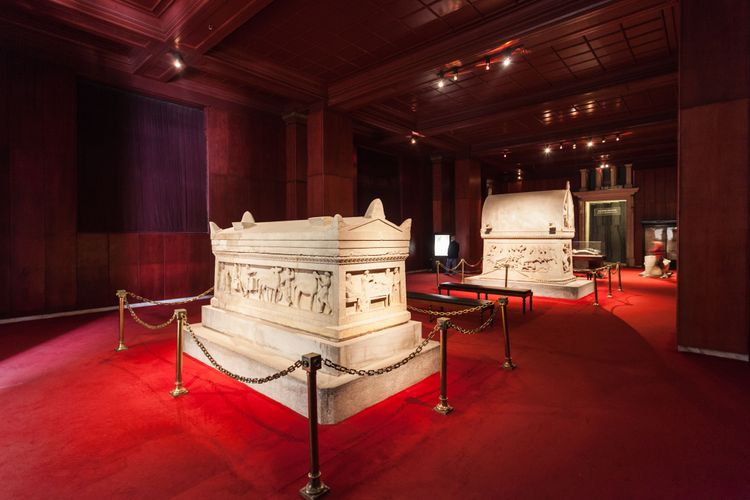
Practical info
It takes at least three hours to visit all three museums.
Price One ticket is all you need for entry to the three museums. The price is TL 50 (€2.50) and the ticket is free for children under 12.
Opening hours The Istanbul Archaeological Museum is open daily from 9am to 5pm, with the last admission at 4pm.
How to get there: Take tram line T1 and get off at the Gulhane Park stop. Near the park, turn right until you reach the museum entrance on the left.




